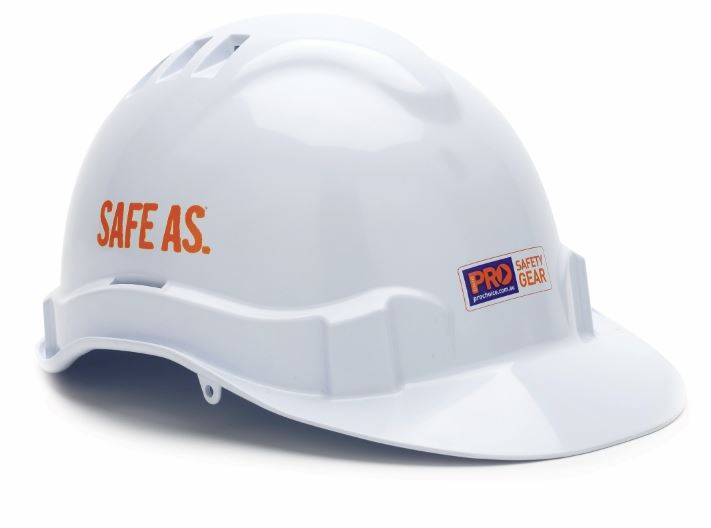Hard Hats: Where, When, Why and How

Use of Hard Hats
They have a snug and comfortable fit and enable the integration of other PPE offer the greatest protection on site. In addition, they must also be worn when working at any height. These are certified hard hats.
Australian regulations demand that safety hard hats be worn on sites when there is a risk of being hit on the head, whether by falling objects or from a collision with a fixed object.
The risk of free falling objects increases in different situations. It could happen where workers are using tools at heights. Maybe poorly secured or unstable loads are being lifted. Moreover, roof scaffolding, bricks, rocks and soil could be dislodged by humans or the weather. Lastly, fixtures such as ceiling panels and pictures might not be properly secured.
Unstable structures also pose a risk, as do objects or materials which could become falling hazards when ejected from hand tools or machinery.
Hard Hats Working at Heights
Safety hard hats also provide a critical last line of defence when working at heights. Wearing a safety helmet most likely saved Peter Haines’ life when he fell five metres from a ladder.
Looking at the numbers, head injuries are common when falling from height. A Safe Work Australia report found the construction industry had the highest number of fatalities and highest number of serious injury compensation claims. This is due to falls from heights in 2008-11 and 2010-11, respectively.
In addition, falls from heights accounted for 25% of all construction fatalities in 2008-11. Across all industries, the report found that 76% of fatalities were due to head injuries incurred in a fall.
More specifically, the data showed that head injuries were the cause of death in 90% of fatalities from falls from roofs and 86% of fatalities from falls from buildings under construction, driving home the need to wear a hard hat.
Furthermore, 50% of the deaths between 2003 and 2011 resulted from falls of three metres or less. Falls from ladders accounting for the greatest number of deaths. Conclusively, hard hats should be worn even when working at very low heights.
On the other hand, head injuries only made up 3% of serious injury compensation claims as a result of a fall. In that light, there is a strong correlation between a head injury and not surviving the fall, further reinforcing the importance of wearing a hard hat.
How Hard Hats Protect
Hard hats protect the head from impact through a number of features. The outer shell resists and deflects blows while the internal suspension system stretches to absorb and spread the shock of impact evenly. The internal webbing also provides a buffer zone between the outer shell and skull.
The integration of other PPE appropriate for the circumstance can further protect against other hazards; for example, ear muffs, face shields, sun flaps and browguards.
Choosing the right hard hat is vital to ensure the best protection in the case of an accident. Employers are responsible for providing their workers with hard hats that comply with Australian Standards, as well as instruction on their proper use.
After ensuring it complies with Australian Standards, a hard hat’s comfort and fit are the two most important factors. A comfortable hard hat will ensure it is happily worn and does not cause distraction, discomfort or inhibit vision.
Furthermore, use a hard hat that is regularly batch tested. Its compliance with Australian Standards independently certified – as shown by the SAI Global 5 Ticks logo – will provide greater peace of mind and quite likely, better protection than a hard hat that is not independently tested.
Check out Pro Choice hard hat here.








































































